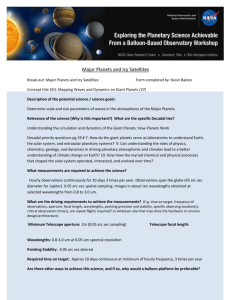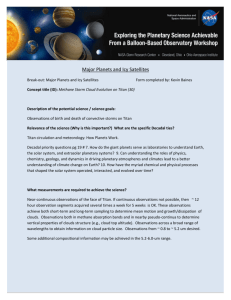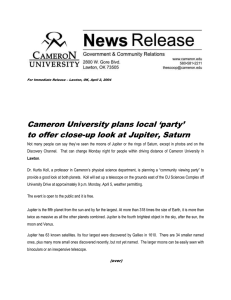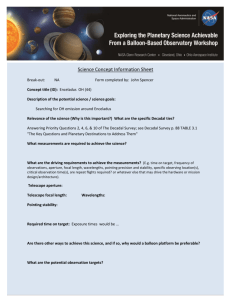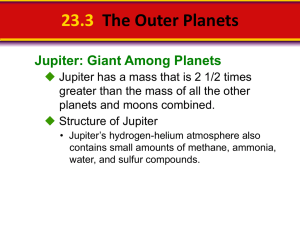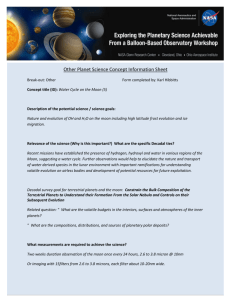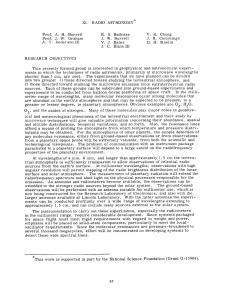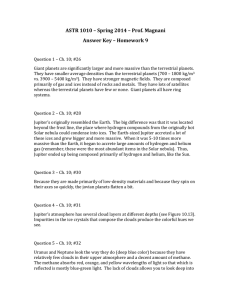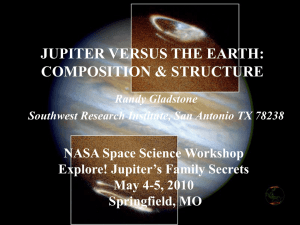Ammonia Storm Cloud Evolution on Jupiter and Saturn
advertisement
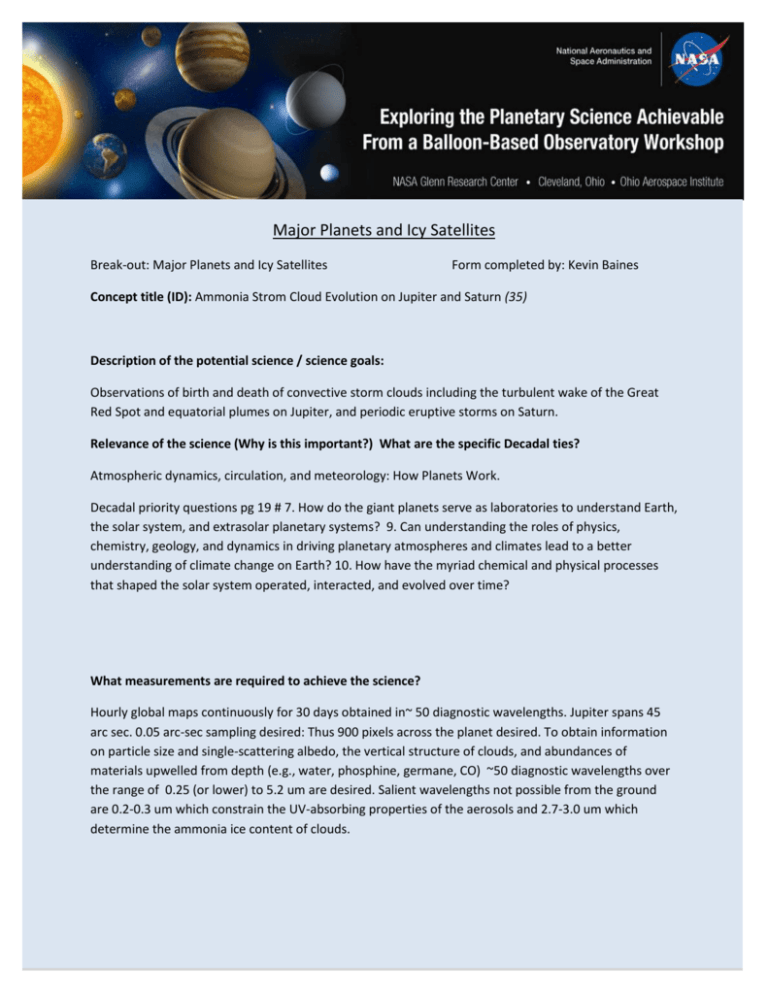
Major Planets and Icy Satellites Break-out: Major Planets and Icy Satellites Form completed by: Kevin Baines Concept title (ID): Ammonia Strom Cloud Evolution on Jupiter and Saturn (35) Description of the potential science / science goals: Observations of birth and death of convective storm clouds including the turbulent wake of the Great Red Spot and equatorial plumes on Jupiter, and periodic eruptive storms on Saturn. Relevance of the science (Why is this important?) What are the specific Decadal ties? Atmospheric dynamics, circulation, and meteorology: How Planets Work. Decadal priority questions pg 19 # 7. How do the giant planets serve as laboratories to understand Earth, the solar system, and extrasolar planetary systems? 9. Can understanding the roles of physics, chemistry, geology, and dynamics in driving planetary atmospheres and climates lead to a better understanding of climate change on Earth? 10. How have the myriad chemical and physical processes that shaped the solar system operated, interacted, and evolved over time? What measurements are required to achieve the science? Hourly global maps continuously for 30 days obtained in~ 50 diagnostic wavelengths. Jupiter spans 45 arc sec. 0.05 arc-sec sampling desired: Thus 900 pixels across the planet desired. To obtain information on particle size and single-scattering albedo, the vertical structure of clouds, and abundances of materials upwelled from depth (e.g., water, phosphine, germane, CO) ~50 diagnostic wavelengths over the range of 0.25 (or lower) to 5.2 um are desired. Salient wavelengths not possible from the ground are 0.2-0.3 um which constrain the UV-absorbing properties of the aerosols and 2.7-3.0 um which determine the ammonia ice content of clouds. What are the driving requirements to achieve the measurements? (E.g. time on target, frequency of observations, aperture, focal length, wavelengths, pointing precision and stability, specific observing location(s), critical observation time(s), are repeat flights required? or whatever else that may drive the hardware or mission design/architecture). Telescope aperture: Telescope focal length: Wavelengths: 0.2-0.5 um, 0.8-1.0 um, 1.5 – 2.2um, 2.73-3.1 um, 4.0-4.2 um and 4.7-5.2um, all at .01um spectral resolution Pointing stability: 0.1 arc sec desired Required time on target: Approx 30 days continuous at 1 hr minimum frequency. Are there other ways to achieve this science, and if so, why would a balloon platform be preferable? Allows for continuous observations for 30 days. Allows for 2.73-3.0 um observations of ammonia ice and 0,2-0.3 um UV observations. Apart from spacecraft, no other platform allows these . What are the potential observation targets? Jupiter and Saturn What planetary science disciplines would this involve? Planetary Atmospheres: Dynamics, Circulation, Meteorology, Chemistry/composition, cosmochemistry Point of contact for follow-on questions (Name and contact info) Kevin Baines (blueskies4321@yahoo.com)
